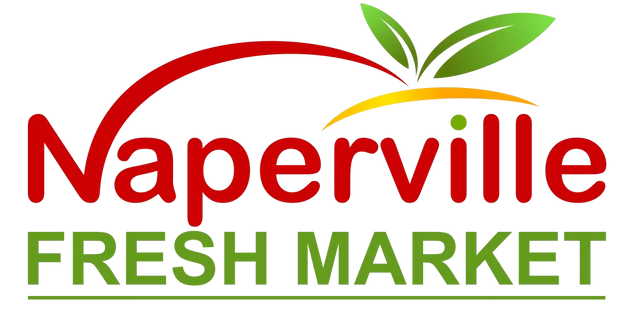What Halal Meat Requires: A Practical Overview
Understanding halal meat requirements helps Naperville residents shop with clarity and cook with confidence. Halal is more than a label; it reflects a system of ethics, hygiene, and spirituality that governs how animals are raised, handled, slaughtered, processed, and sold. This guide translates those requirements into everyday steps you can use at the store and in your kitchen. To shape a weekly plan that respects these principles and supports efficient shopping, glance at local weekly deals before you finalize your menu.
In practice, halal requirements address several layers: the permissibility of the animal itself, the method of slaughter (dhabihah), the prevention of contamination with non-halal substances, and the integrity of the supply chain. When each layer is respected, the final product aligns with faith-based expectations and delivers a wholesome experience at the table.
Permissible Animals and Prohibitions
Halal parameters begin with permitted species. Commonly, beef, lamb, goat, and poultry are permissible when handled according to halal rules. Animals that are carnivorous or scavengers are not permitted, and pork is expressly prohibited. Additionally, the animal must be healthy at the time of slaughter, and any illness or defect that would render it unfit for consumption must be absent. This attention to health is both a spiritual and practical measure that supports safety and quality.
Seafood is often considered separately; many interpretations recognize a wide range of permissible seafood, though traditions vary. For this guide’s focus on land-based meats, the key takeaway is to confirm both species permissibility and proper handling from start to finish.
Dhabihah: The Slaughter Method
Dhabihah refers to the prescribed slaughter method. Essential elements include invoking the name of God, using a sharp instrument, severing the major vessels in the neck to allow thorough draining of blood, and ensuring the animal is alive and healthy at the time of slaughter. The process should be conducted by a trained person with respect and care, minimizing distress and handling the animal humanely throughout. Thorough draining is emphasized as part of both spiritual observance and product quality.
An ongoing discussion among consumers and certifiers revolves around stunning. Some certification bodies allow specific forms of reversible stunning if it is proven not to cause death prior to slaughter, while others prohibit it. When in doubt, ask your butcher or retailer which standard their suppliers follow and request certification details that clarify the practice.
Preventing Cross-Contamination
Once slaughter and initial processing are complete, attention shifts to preventing cross-contact with non-halal items. In facilities that handle both halal and non-halal products, strict separation is essential. Dedicated equipment, clearly labeled storage, and careful sanitation protocols protect integrity. At the retail level, separate display cases, tools, and prep areas help maintain compliance. Consumers can reinforce these practices at home by using dedicated cutting boards for raw proteins and storing meat on the lowest shelf to avoid drips.
Packaging and labeling support traceability. Clear labels that display certification logos, batch information, and safe handling instructions give shoppers confidence in the product’s journey from plant to store. If a label looks unclear or is missing key details, ask staff for documentation or select another item.
Certification and Oversight
Certification agencies verify that halal requirements are met throughout slaughter and processing. They may conduct audits, review documentation, and train staff in proper procedures. For consumers, the presence of a recognized certification symbol on the package or signage at the butcher counter is a helpful signal. Still, do not hesitate to ask questions: Which certifier oversees this plant? How do you prevent cross-contact? When was this product processed? Clear answers help you shop with assurance.
Retailers that value transparency will often be able to describe their supply chain, cleaning schedules, and receiving practices. Over time, these details build trust and keep you informed about the best days to shop for the widest selection and freshest arrivals.
Quality, Freshness, and Wholesomeness (Tayyib)
Halal emphasizes tayyib—wholesomeness. This overlaps with everyday quality metrics that any cook values. Fresh meat shows vibrant species-appropriate color, firm texture without sliminess, and a clean aroma. Packaging should be intact, with minimal liquid and clear labeling. In service counters, neat displays and a steady pace of trimming and replenishing reflect attention to detail and hygiene.
At home, maintain tayyib through careful storage and preparation. Refrigerate promptly, portion and label if you will store part of your purchase, and thaw in the refrigerator. Clean tools and surfaces between tasks, and reserve separate boards for proteins and produce to avoid cross-contact.
Cooking with Integrity
While halal requirements focus heavily on sourcing and processing, cooking completes the journey to the table. Choose methods that suit your cuts: quick searing for tender steaks, gentle braising for tougher shoulder cuts, and attentive roasting for whole poultry. Rest meat after cooking to retain moisture, and season with spice blends that complement the natural character of the protein. When you honor both process and preparation, every meal reflects the intent behind halal.
Meal planning ties everything together. Draft a weekly plan that pairs two or three proteins with versatile side dishes, and batch-cook where it makes sense. For smooth execution, align your shopping with local weekly deals so you can explore timely selections that suit your menu.
FAQ
Q: What makes meat halal? A: Permissible species, proper slaughter (dhabihah) with the name of God invoked, thorough draining of blood, and prevention of cross-contact with non-halal items.
Q: How can I verify halal claims at the store? A: Look for certification logos, ask staff about their certifier and procedures, and check that packaging and display practices keep halal items separate.
Q: Is stunning allowed in halal slaughter? A: Policies vary by certifier and region. Some permit reversible stunning under strict conditions; others do not. Ask your butcher for details about their suppliers’ standards.
Q: What signs indicate fresh, wholesome meat? A: Species-appropriate color, firm texture without slime, a clean aroma, and intact packaging with clear labels.
Q: How do I maintain halal integrity at home? A: Store meat on the lowest shelf, use separate boards for proteins and produce, and clean tools and surfaces between tasks to prevent cross-contact.
Q: Which cuts are most versatile for weekly cooking? A: Beef chuck, lamb shoulder, goat for stews, and boneless poultry for quick sautés or roasting are reliable options to anchor a weekly menu.
Putting Halal Principles into Practice
For Naperville residents, understanding halal requirements turns a routine trip into an intentional practice that unites faith, food safety, and culinary joy. Verify certification, inspect freshness, and handle ingredients with care from store to stove. Keep notes on the cuts and recipes your household enjoys so each week becomes easier to plan. When you are ready to organize your next menu, scan current weekly deals, choose your proteins, and look forward to serving balanced, satisfying halal meals at home.




